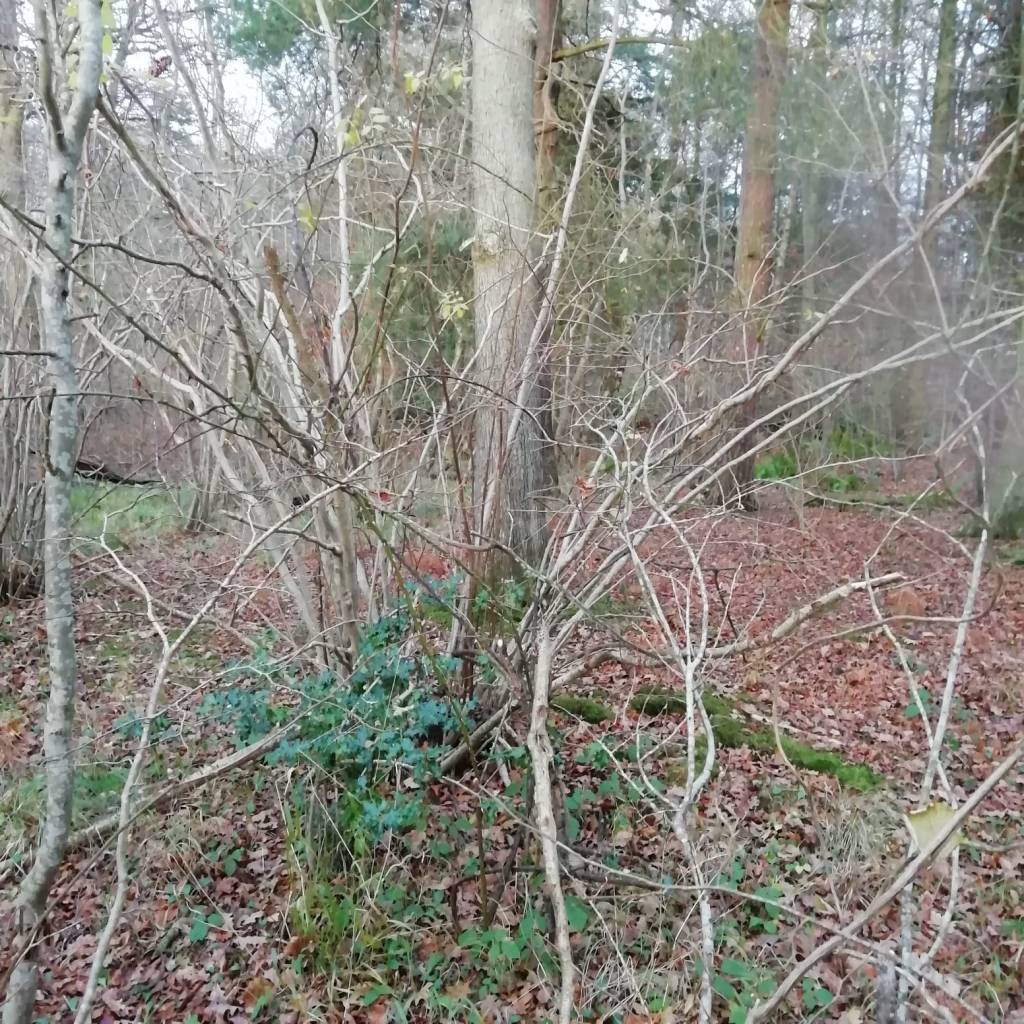As part of a recent safety inspection after storms Arwen and Barra, Nev and Paul made an interesting discovery in the community woodland. In an area of around half an acre on the western edge of the woods, next to the road to Broadwoodside, there are a number of hazel coppice stumps (‘stools’) beneath several old well-established oaks.

These stools appear to be very old and are an example of a form of woodland management called ‘coppice with standards’ common throughout Europe for hundreds of years. The large trees can be grown for over 200 years and would have provided high quality timber for house building, ships etc. Whilst the coppice would have been cut on anything from a 4 to 20 year cycle to provide material for such things as wattle and daub, fencing, and charcoal.
This form of management may have existed elsewhere in the wood but this corner is a remarkable example and its position so close to Broadwoodside suggest it may have provided material for the gardens there in times past.

Coppicing has enjoyed a resurgence in recent years, not only because of its simplicity and the low cost renewable material it provides, but because the regular cutting floods the woodland floor with light leading to a huge resurgence of flowers and insects.
We have the opportunity to return this corner of the woodland to the traditional model of woodland management; oak standards and hazel coppices. This would mean removing any recent self-sown beech, sycamore and brambles. We would then cut back the hazel stools which would then regenerate new sun shoots each spring. These cuttings could then be used by the community.
What are your views on seeing this interesting little corner of the community woodland being restored for coppicing?
We would love to hear from anyone with stories or information about this part of our woods. Please do contact us. Thank you!

I think this is an excellent proposal to bring back this part of the woodland to how things might have been in days gone by and the encouragement of wild flowers adds to the beauty of our woodland.
LikeLike